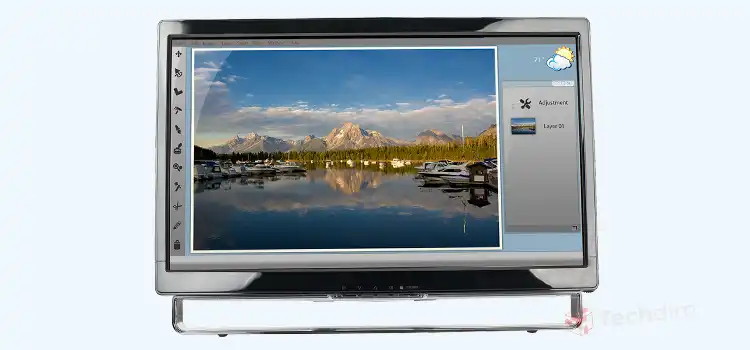GPU vs CPU | What’s the Difference?
Both CPU and GPU are processing units, but they are not responsible for processing the same data. However, every major functionality of the computer is processed by the CPU whereas GPU is capable of running numerous smaller processing at a time. Needless to say, both of them are essential for solid and sound computing.
In this article, we’ll explain the differences between CPU and GPU as well as what are the main functionality of these two.

What’s CPU
CPU is named as the Central Processing Unit of any computer. The total mathematical (Arithmetic) functions of a computer are processed here. It enables the computer to perform mathematical operations. Shortly it is called Processor. CPU is called as the brain of a computer.

Components of a CPU
A typical processor has 2 types of identical components. The first one is the Arithmetical Logic Unit which is known as ALU and the second one is CU which is abbreviated as a control unit. ALU mainly performs different types of mathematical and logical calculations. CU controls the different parts of the computer. It reads the instructions from the memory and then turns them into signals and then sends them to the different components so that those components can work with the given instructions. The control unit depends upon on the ALU because, in time of turning signal, the CU needs to do arithmetical calculations. And ALU does that job for CU.
What’s GPU

According to Wikipedia, A graphics processing unit (GPU), occasionally called a visual processing unit (VPU), is a specialized electronic circuit designed to rapidly manipulate and alter memory to accelerate the creation of images in a frame buffer intended for output to a display device. Actually, the work of GPU is it renders any 3D images shown in the monitor to increase its visual effects so it might look more realistic. Hardware acceleration greatly depends on this. A GPU is used primarily for 3D applications. It smoothens the edges of a 3D object and creates lighting effects
Differences Between CPU & GPU
Here’s how they are different from each other in both processing and performance:
Specification
In the case of CPU, there must be some parameters by which we can classify any CPU or processor. CPU’s are classified mainly based on their clock speed, BUS speed, and the number of physical and virtual cores.
The widely used processor’s manufacturers are Intel Corporation and AMD Corporation. The latest edition of the CPU made by Intel is CORE i-9 X series processors. They are considered as the most powerful advanced processors in the world till now.
Core i-9 processors have 18 cores and 36 threads. Its BUS speed is 8 GT/s. Some of the most used processors are intel core i-3, core i-5, core i-7, AMD Athlon Series, etc.
On the other hand, GPUs can be classified based on their memory size, memory types (DDR4, DDR3, etc), Open GL, Direct x support, etc. Also, the performance and quality of a GPU can be measured by the number of their existing cores. The manufacturer of Graphics cards is mainly AMD and Nvidia Corporation. The Nvidia Corporation introduces us to the CUDA core technology which enables the GPU acceleration process.
Performance
I’ve told you guys before that CPU’s are mainly used for functioning the working process of the total computer. So the performance of CPU depends on their core numbers, clock, and BUS speed. Performances generally differ concerning these criteria. Heat dissipation is also a big factor, for which we use thermal paste and grease on the processor.
The 3rd generation CPU’s (core i-3, i-5) performs well then the 2nd generation processors (Pentium, Celeron, etc).
GPU’s performances differ based on their memory types. There are two types of GPU memory. The first one is DDR3 and the last one is GDDR5. GDDR% is the latest version. But you can’t say that GDDR5 is better than DDR3. Because these memory types synchronize with the memory types of the RAM. GDDR5 can match better with DDR4 or DDR3L RAM. Otherwise, you will not be able to find your desired performance. You can do a stress test on your GPU.
CACHE
For CPU cache memory is a very important thing. First of all, you need to know what cache memory actually is. Mainly it may compare to an advanced mathematical functioning process of the memory. Cache memory is 2 types. They are Level 1 cache (L1) and Level 2 (L2) cache memory. When L1 cache memory fails to operate its memory function (Noted as Cache miss) then L2 cache activates and supports the L1 cache memory.
For GPU cache memory doesn’t create any effect on its performance.
Suitable for Use
Comparing GPU vs CPU, CPU is necessary and suitable for overall computers built-in applications. CPU serves the whole computer performance as well as its functioning. So the CPU is suitable for almost every program of a computer.
In the case of GPU, people who work for making Graphics and Rendering, Video editing, playing games, etc, GPU is a must for them. In terms of video or photography editing, motion blur technology play a vital role. Otherwise, users can’t access their satisfaction because the CPU won’t be able to handle these applications without the help of the GPU.
Frequently Asked Questions
Do I need more CPU or GPU?
For regular computing, average users will see a much more improvement in CPU upgradation rather than upgrading the GPU. However, for more graphics intensive tasks, you should consider upgrading the GPU as well, if you already have a capable CPU.
How much GPU do I need?
For general computer usage, a 2GB size of GPU memory should more than suffice. However, this may prove to be inadequate for gaming.
Conclusion
So, we can see that having a great experience along with the performance of a computer, CPU, and GPU both plays a vital role. The manufacturing corporations are focusing on the development of these components for better computing experiences of the customers.
Subscribe to our newsletter
& plug into
the world of technology





